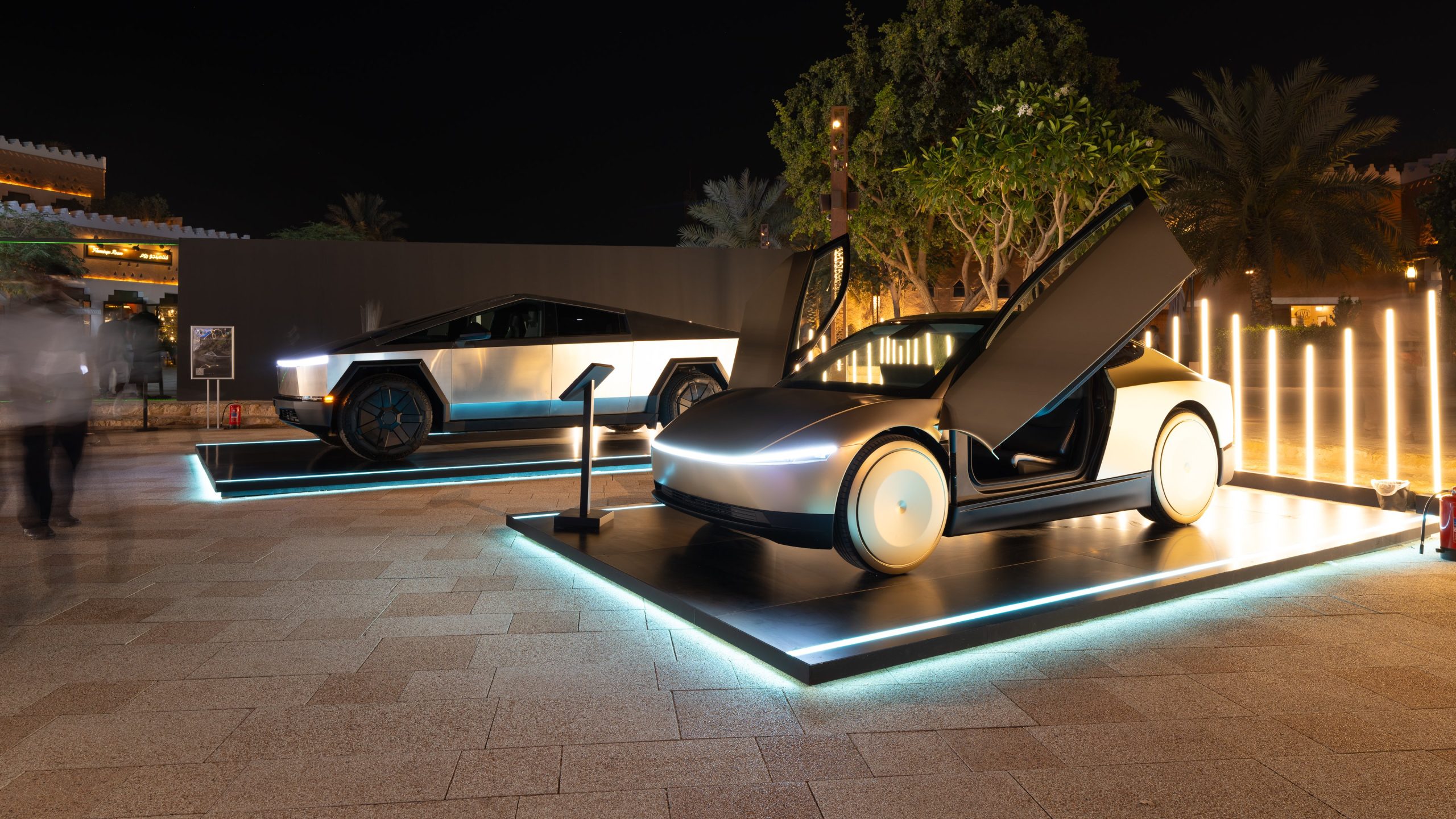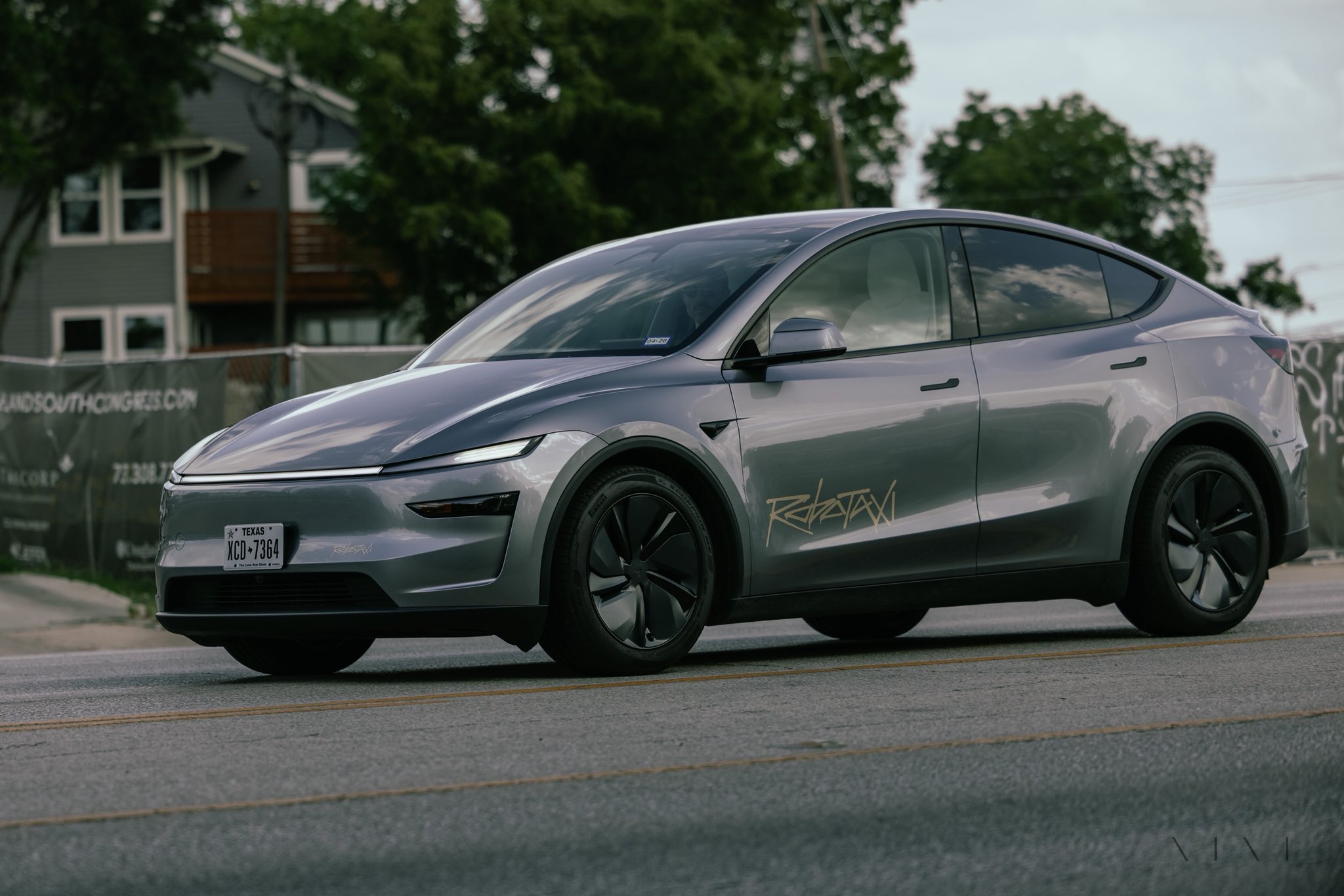Elon Musk
Tesla Robotaxi and autonomy dreams lean on shareholders: Wedbush

Tesla’s dreams of developing a Robotaxi suite that utilizes a fully autonomous platform developed by the company’s top-tier talent now lean on shareholders and perhaps the most crucial vote in its history.
That’s what Dan Ives of Wedbush said in a new note to investors on Wednesday. As the Annual Shareholders’ Meeting is now just one day away, investors are down to their final chance to vote for or against Elon Musk’s new compensation plan.
Ives wrote that, while the company has made its intentions clear, wanting to maintain Musk, pay him accordingly, and give him the voting power he has long wanted, ultimately, the responsibility falls on investors.
🚨 A new note from Wedbush’s Dan Ives on Tesla $TSLA:
“A Big Day On Deck Tomorrow for Musk and Tesla; We Expect Pay Package Passes
Tomorrow Tesla will be hosting its annual shareholder meeting with all focus on the Musk pay package on deck. We expect Musk to get overwhelming…
— TESLARATI (@Teslarati) November 5, 2025
As many retail shareholders have pushed for people to vote for Musk’s compensation package, there are a handful of large-scale funds and firms that have decided to go in another direction. Bullish Wall Street firms, Wedbush being one of them, believe it is crucial for Tesla to maintain Musk.
The vote could have major implications on whether Tesla launches an autonomous Robotaxi suite in the near future, Ives says:
“Getting Musk’s pay package approved tomorrow at the highly anticipated meeting will be a big step towards advancing Tesla’s future goals with the autonomous and Robotaxi roadmap ahead.”
While some investors are convinced the company is ready to go in a different direction simply based on Musk’s political involvement over the past year, many investors are under the impression that the development of Tesla’s autonomy suite, as well as its prowess in the EV sector, would fall if Elon were not at the helm.
Tesla’s Board of Directors has already stated that they have received confirmation that Musk’s political involvement would wind down in a timely manner. Moving forward, his focus will not veer from the mission of any of his companies; at least that’s what can be gathered from some of the Board’s communications over the past month.
Musk’s new compensation package is incentivized by performance metrics and will require him to achieve a handful of lofty tranches. He will not get paid unless he drives shareholder value, which is something many skeptics tend to leave out.
Ives continues:
“This new incentive-driven pay package for Musk would also provide an additional 423 million shares of common stock (~12% of shares), which would increase his ownership of Tesla up to ~25% voting power, which we believe was critical to keep Musk at the helm to lead Tesla through the most critical time in the company’s history. We believe this was the smart move by the Board to lay out these incentives/pay package at this key time as the biggest asset for Tesla is Musk…and with the AI Revolution, this is a crucial time for Tesla ahead with autonomous and robotics front and center.”
Wedbush maintained its Outperform rating and $600 price target on shares.

Elon Musk
Tesla needs to come through on this one Robotaxi metric, analyst says
“We think the key focus from here will be how fast Tesla can scale driverless operations (including if Tesla’s approach to software/hardware allows it to scale significantly faster than competitors, as the company has argued), and on profitability.”

Tesla needs to come through on this one Robotaxi metric, Mark Delaney of Goldman Sachs says.
Tesla is in the process of rolling out its Robotaxi platform to areas outside of Austin and the California Bay Area. It has plans to launch in five additional cities, including Houston, Dallas, Miami, Las Vegas, and Phoenix.
However, the company’s expansion is not what the focus needs to be, according to Delaney. It’s the speed of deployment.
The analyst said:
“We think the key focus from here will be how fast Tesla can scale driverless operations (including if Tesla’s approach to software/hardware allows it to scale significantly faster than competitors, as the company has argued), and on profitability.”
Profitability will come as the Robotaxi fleet expands. Making that money will be dependent on when Tesla can initiate rides in more areas, giving more customers access to the program.
There are some additional things that the company needs to make happen ahead of the major Robotaxi expansion, one of those things is launching driverless rides in Austin, the first city in which it launched the program.
This week, Tesla started testing driverless Robotaxi rides in Austin, as two different Model Y units were spotted with no occupants, a huge step in the company’s plans for the ride-sharing platform.
Tesla Robotaxi goes driverless as Musk confirms Safety Monitor removal testing
CEO Elon Musk has been hoping to remove Safety Monitors from Robotaxis in Austin for several months, first mentioning the plan to have them out by the end of 2025 in September. He confirmed on Sunday that Tesla had officially removed vehicle occupants and started testing truly unsupervised rides.
Although Safety Monitors in Austin have been sitting in the passenger’s seat, they have still had the ability to override things in case of an emergency. After all, the ultimate goal was safety and avoiding any accidents or injuries.
Goldman Sachs reiterated its ‘Neutral’ rating and its $400 price target. Delaney said, “Tesla is making progress with its autonomous technology,” and recent developments make it evident that this is true.
Elon Musk
Tesla CEO Elon Musk shades Waymo: ‘Never really had a chance’

Tesla CEO Elon Musk shaded Waymo in a post on X on Wednesday, stating the company “never really had a chance” and that it “will be obvious in hindsight.”
Tesla and Waymo are the two primary contributors to the self-driving efforts in the United States, with both operating driverless ride-hailing services in the country. Tesla does have a Safety Monitor present in its vehicles in Austin, Texas, and someone in the driver’s seat in its Bay Area operation.
Musk says the Austin operation will be completely void of any Safety Monitors by the end of the year.
🚨 Tesla vs. Waymo Geofence in Austin https://t.co/A6ffPtp5xv pic.twitter.com/mrnL0YNSn4
— TESLARATI (@Teslarati) December 10, 2025
With the two companies being the main members of the driverless movement in the U.S., there is certainly a rivalry. The two have sparred back and forth with their geofences, or service areas, in both Austin and the Bay Area.
While that is a metric for comparison now, ultimately, it will not matter in the coming years, as the two companies will likely operate in a similar fashion.
Waymo has geared its business toward larger cities, and Tesla has said that its self-driving efforts will expand to every single one of its vehicles in any location globally. This is where the true difference between the two lies, along with the fact that Tesla uses its own vehicles, while Waymo has several models in its lineup from different manufacturers.
The two also have different ideas on how to solve self-driving, as Tesla uses a vision-only approach. Waymo relies on several things, including LiDAR, which Musk once called “a fool’s errand.”
This is where Tesla sets itself apart from the competition, and Musk highlighted the company’s position against Waymo.
Jeff Dean, the Chief Scientist for Google DeepMind, said on X:
“I don’t think Tesla has anywhere near the volume of rider-only autonomous miles that Waymo has (96M for Waymo, as of today). The safety data is quite compelling for Waymo, as well.”
Musk replied:
“Waymo never really had a chance against Tesla. This will be obvious in hindsight.”
Waymo never really had a chance against Tesla. This will be obvious in hindsight.
— Elon Musk (@elonmusk) December 10, 2025
Tesla stands to have a much larger fleet of vehicles in the coming years if it chooses to activate Robotaxi services with all passenger vehicles. A simple Over-the-Air update will activate this capability, while Waymo would likely be confined to the vehicles it commissions as Robotaxis.
Elon Musk
Tesla CEO Elon Musk confirms Robotaxi is set to go unsupervised
Musk has made the claim about removing Safety Monitors from Tesla Robotaxi vehicles in Austin three times this year, once in September, once in October, and once in November.

Tesla CEO Elon Musk confirmed on Tuesday at the xAI Hackathon that the company would be removing Safety Monitors from Robotaxis in Austin in just three weeks.
This would meet Musk’s timeline from earlier this year, as he has said on several occasions that Tesla Robotaxis would have no supervision in Austin by the end of 2025.
On Tuesday, Musk said:
“Unsupervised is pretty much solved at this point. So there will be Tesla Robotaxis operating in Austin with no one in them. Not even anyone in the passenger seat in about three weeks.”
Musk has made the claim about removing Safety Monitors from Tesla Robotaxi vehicles in Austin three times this year, once in September, once in October, and once in November.
In September, he said:
“Should be no safety driver by end of year.”
The safety driver is just there for the first few months to be extra safe.
Should be no safety driver by end of year.
— Elon Musk (@elonmusk) September 4, 2025
On the Q3 Earnings Call in October, he said:
“We are expecting ot have no safety drivers in at least large parts of Austin by the end of this year.”
Finally, in November, he reiterated the timeline in a public statement at the Shareholder Meeting:
“I expect Robotaxis to operate without safety drivers in large parts of Austin this year.”
Currently, Tesla uses Safety Monitors in Austin in the passenger’s seat on local roads. They will sit in the driver’s seat for highway routes. In the Bay Area ride-hailing operation, there is always a Safety Monitor in the driver’s seat.
Three weeks would deliver on the end-of-year promise, cutting it close, beating it by just two days. However, it would be a tremendous leap forward in the Robotaxi program, and would shut the mouths of many skeptics who state the current iteration is no different than having an Uber.
Tesla has also expanded its Robotaxi fleet this year, but the company has not given exact figures. Once it expands its fleet, even more progress will be made in Tesla’s self-driving efforts.








